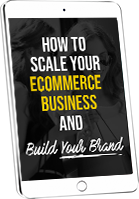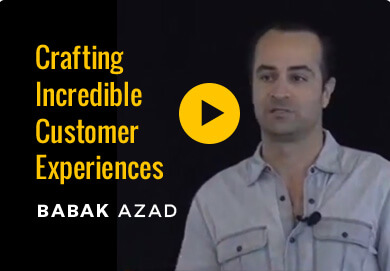(This is the second in a 3-part series where I share some of my “secrets” to scaling a performance marketing business. If you missed part 1, you can find it here.)
Scale doesn’t happen unless something is working. It sounds obvious, but the reason I start with that point is that if you don’t have a working offer and channel (again, you can see Part 1 of this series), then this post would be moot. Thus, I’m assuming you have something that’s working.
The next step is about making sure attention is put in the right places. Some is foundational work, some is true operations. And whether you’re at $5mm, $50mm or over $100mm, it’s a bit of a relative question about putting in the foundations for the next level of scale.
So, what constitutes building that foundation? Well, fundamentally, I’m a believer that focusing on the below 3 areas can dramatically increase the chances of scalability and sustainability of a business.
1. Customer LTV
2. Brand
3. Operational Excellence
Customer LTV
I’ve written about the importance of knowing the value of your customer and having a robust unit economics model numerous times. I walk thru the actual model here and go over some additional basics here.
I’ll hit only the key points now:
1. There are 2 primary reasons you need to understand customer LTV and your unit economics model:
a) to manage your media. If you’re running paid media of any form and don’t know the value of a customer, you’re headed for trouble. You need to know how much you generate from a customer, what your goals are (% margin, breakeven by a certain day, etc.), and then that helps you back into your target CPA.
b) to identify the key levers in your model and where to deploy resources for improvement, testing, etc. Knowing your baseline metrics and goals is one thing. Great companies believe that they are never fully-optimized and so have a constant testing program. But everyone is resource-constrained, so knowing where to deploy resources is crucial.
2. Someone on the team must be accountable for maximizing customer LTV, and as a result, the target CPA. That doesn’t mean they do so at the exclusion of the brand (see the next main section), nor does it mean they do everything on their own. But someone must “own” customer LTV. You’re not going to get better at the pace you want if you don’t do so.
3. Customer LTV is a combination of revenues AND costs. It’s more fun and sexier to focus on the former. But if you reduce the latter, that goes straight to more dollars you can put to customer acquisition. Here’s are a couple of my posts about optimizing revenues and costs.
4. G&A, investments, capex, etc. should NOT be a part of your unit economics model. The point of the model is to capture the revenues and marginal/incurred costs associated with those revenues. You don’t need to hire a new person for each incremental order. Sure, at some point, you do need to make those types of commitments, but that doesn’t mean they should be included in that model.
5. Who has checked the data that is behind the assumptions in your model?
Brand
If you want to build a business that is scalable and sustainable, you need to focus on brand. Again, look at the patterns. There will always be exceptions, but I’m a believer in playing the odds when it comes to things like brand. And more great companies have put attention towards building theirs.
Having a brand mindset also provides the necessary counterbalance when you are driving so hard on Customer LTV. It can be easy to be so exclusively focused on Customer LTV that you lose sight of what truly serves the customer.
I’ll give you an example from my early days at Beachbody. In one of our offers, we sold 3 bands with 2 handles. In my supposed genius at the time, the math said that if you pulled out 1 of those handles, we’d save money. The math isn’t rocket science. But the move entirely ignored the customer experience – it’s not easy to switch handles from one band to another. Now, I doubt that this decision had a significant impact on the brand experience, but it’s a simple example of how an action might save you money and increase customer LTV while being pretty crappy for the customer. My bad….
I’ve become so much more focused on brand over the past couple years because it’s been noticeably absent from conversations I’ve had with performance marketers (another area I’ve posted about previously). Ultimately, the “brand” conversation is about customer experience. How are you serving them, how do you treat them, what experience does a customer have of your business? As much as we want to drive what the brand means, our customers are the ones who have the final say.
Brand is not simply a logo, fonts, or an ad you run. Your brand reflects the values and perspectives you stand for. The logo is simply a representation of those values, but the logo isn’t the brand. It’s easy to get these mixed up.
A strong brand means a higher company valuation. It means connection with customers, which leads to more repeat customers as well as word of mouth (which is another term for a $0 CPA).
At the same time, the difference is telling in the way that performance marketers vs. traditional brand folks look at brand and sales. Performance marketers believe that sales drives creation of the brand. While traditional brand folks believe that you create the brand, which in turn drives sales. I can’t say for sure who is right and who is wrong. But many people can’t afford to build the brand while ignoring sales.
Which is why the term “branded response” has gotten in vogue. The phrase reflects that it is no longer either/or, but “and” – brand and performance need to be built concurrently. We’ve seen this become particularly prevalent as e-commerce players have used video – Facebook and TV – to build their businesses. The goal is to drive response, but without feeling like the ShamWow! (Btw, Vince made 8 figures off that product, so there’s a good measure of respect behind what might’ve felt like a jab at the ShamWow…)
At the same time, especially if you’re in a consumer business, and a subscription one, the quality of your product and service can be a huge difference in how your customers experience and think about your brand. Just as many marketers ignore brand entirely, too many ignore the importance of the quality they are delivering, believing that good marketing will always win. True, good marketing is helpful. Good marketing + exceptional product – that can be a game-changer.
Where is brand created? The answer, for good and for bad, is that our brands are created everywhere. At every touch point and interaction. Pre-purchase, post-purchase, in the product, name a place. That can be daunting but it’s also the reality. Alignment across the company of what the brand stands for, how you expect to treat customers, vendors, or stakeholders, is crucial if you want to have a consistent experience at all the touch points. And to build something that is defining and long-lasting.
Operational Excellence
To scale, you need to build a machine that runs as effectively and efficiently as possible. At scale, the organization needs to run well so that it’s no longer a couple people getting things done, scrambling to take care of those last customers. Similarly, no longer is everyone in the same room nor even same building. Which means building out the org, internal processes, systems, and beyond.
It’s at this point where the importance of bringing in people who have “been there and done that” is so important. In a company’s early days, you can figure things out real time because often the scope of the issues that arise is manageable. But as the business becomes more complex, sophisticated and expansive in scale, it’s just not practical that the original team can manage these issues.
Not to say that people can’t evolve into these more expansive roles. At the CEO level, Bill Gates and Mark Zuckerberg provide great examples of founders who have transitioned into professional CEO’s of huge entities. But a) they are the exception, not the rule; b) you must be honest about different members’ real strengths; and c) simply because of the expanding scope and needs of the business, new people will need to be brought in no matter what. And if the existing folks on your team aren’t delivering with the new needs, it doesn’t serve anyone to hold them in those roles too long. I’ve seen plenty of examples where those people continue at the company and have a great career. And I’ve seen times where the culture shifts, their ego gets in their way, or there’s just another dynamic that they exit the company.
Operational excellence is such a broad phrase, but here are a handful of questions I ask clients when evaluating this area of their business.
• How well is the company led? (It sounds simple, this gets to the heart of building a business.)
• How well does the company run? (This is different than the first question – I like asking it because if there is supposedly good leadership but things don’t run so well – that’s a disconnect to investigate.)
• Can each functional area in the business point to improvements they’ve made in the past 12 months when it comes to vendor pricing or new / redundant vendors?
• Can you point to certain areas where things used to break but no longer do (increase in order volume, technology issues, quality of data, new hire onboarding, financial statements being produced more quickly, etc.)?
• When something breaks and a flood of customers call to find out what’s happening, do they a) get thru; b) get a reasonable answer with reasonable expectations. (I like a customer service question, especially when something breaks, as it goes to how front-line employees and workers have been communicated to, trained, etc. on what the brand stands for.)
• Is there a single person accountable for the different areas in the business, and do they and their teams have specific KPI’s / performance targets they are trying to hit?
Just asking these basic questions can start to reveal areas of opportunities.
Even if you keep your business focused in certain areas, but as the business sees financial growth, the number of moving parts increases. That could be as simple as more customers buying the same product (which has operational, technological and customer service implications) or more products you sell (the same as the prior issues, but you get to add product development, sourcing, etc.). It can also include new services, new geographies, or new partners, to name a few.
Regardless, each time the business changes or grows, it comes with its own issues. Some of these appear over time and may require step-function changes. At some point, your technology platform may require an overhaul, your office space may no longer be sufficient; or you may need to add a location with your fulfillment partner.
Operational excellence comes with a methodical and organized approach to breaking down the business, assigning specific people to be accountable for those areas, and then setting targets for them to achieve.
Typically, the break points for growth happen at $10MM, $25MM, $50MM, $100MM, and $500MM. Not to say there aren’t challenges along the way, but those levels are when a lot of businesses run into challenges. Knowing they are coming, planning for the next stages of growth, and then managing through as it’s happening are all just components of growth. The good thing is that it’s likely that others have gone through similar issues, and there’s a lot you can model off.
And really, much of this approach of focusing on Customer LTV, Brand, and Operational Excellence, is based on seeing what has worked (and hasn’t worked) at many companies to formulate an approach towards managing scale.
Stay tuned for the final part of this series, where I’ll focus on Next Level Media Management. It’s an area dear to my heart and allows me to share my learnings from managing over a half a billion dollars at media spend. Regardless of your scale, my goal is to provide some actionable insights.
As always, please let me know any thoughts or comments you have on the above.







Great thoughtful ideas, thanks for sharing!
Thanks John. Glad you liked it.
-Babak